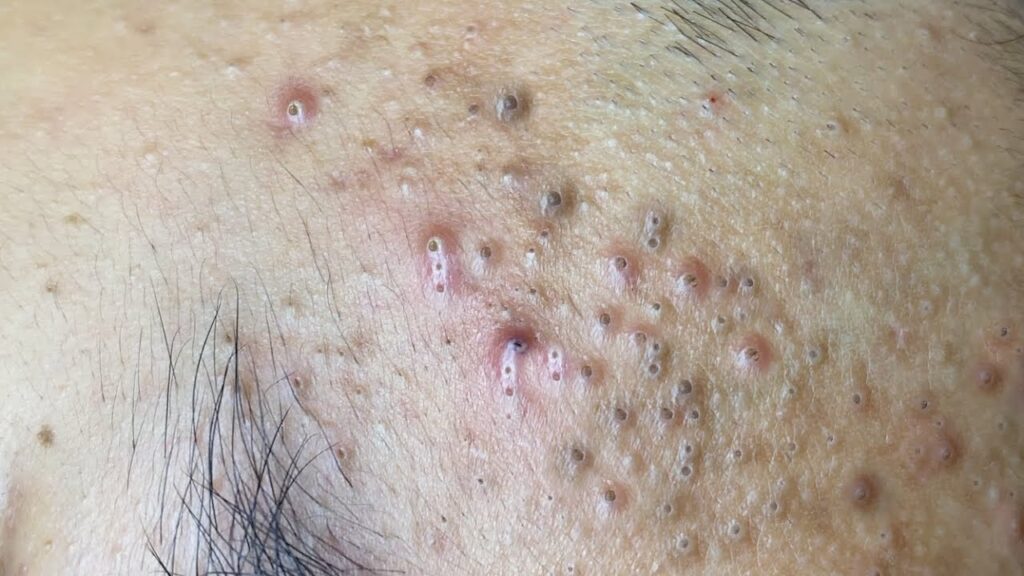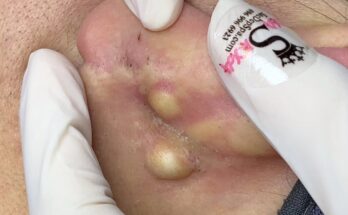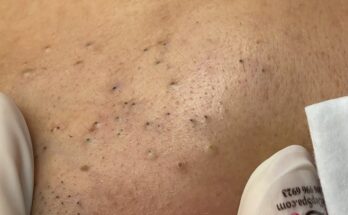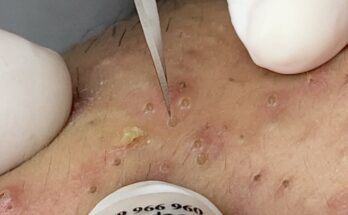
It might seem counterintuitive to put moisturizer on already oily, acne-prone skin, but it’s one of the most important steps for preventing breakouts. The key is to understand the difference between skin that’s oily and skin that’s dehydrated.
Why Skipping Moisturizer Worsens Acne
When your skin is dehydrated, it lacks water. This can happen to any skin type, even if it’s oily. When the skin’s barrier is compromised and its moisture content is low, it tries to compensate by producing more oil (sebum) to protect itself. This overproduction of oil can lead to:
- Clogged Pores: Excess oil can easily mix with dead skin cells and other debris, leading to a perfect recipe for clogged pores and the formation of blackheads, whiteheads, and pimples.
- Increased Inflammation: A dehydrated and damaged skin barrier is more susceptible to irritation and inflammation, which can make existing acne worse and cause new breakouts.
- Impaired Healing: Properly hydrated skin is better equipped to heal itself. Without enough water, the skin’s natural healing process slows down, making acne marks and scars linger longer.
- Irritation from Acne Treatments: Many effective acne treatments, like retinoids, benzoyl peroxide, and salicylic acid, can be drying. Skipping moisturizer can lead to extreme dryness, flaking, and redness, which can further damage the skin barrier and cause more breakouts.
Hydrating vs. Moisturizing: What’s the Difference?
While the terms are often used interchangeably, they refer to different functions:
- Hydration refers to the water content of the skin. A hydrator, typically a serum or a lightweight lotion, works to attract water to the skin’s surface. Think of hydrating ingredients as a sponge, pulling moisture from the air or from deeper layers of the skin. Common hydrating ingredients are called humectants.
- Moisturizing refers to locking in that hydration and providing a protective barrier on the skin’s surface to prevent water loss. A moisturizer, which is often a cream, lotion, or oil, works by creating a seal that keeps moisture in and external irritants out. Moisturizing ingredients are known as emollients and occlusives.
The ideal routine for acne-prone skin is to use a product that both hydrates (adds water) and moisturizes (locks it in) without being too heavy or clogging pores.
Best Lightweight, Acne-Friendly Hydrators
When looking for a moisturizer for acne-prone skin, it is crucial to find a product that is “non-comedogenic,” meaning it has been formulated not to clog pores. Gel-based or oil-free formulas are often the best choice. Look for these key ingredients:
- Hyaluronic Acid: A powerful humectant that can hold up to 1,000 times its weight in water. It provides intense hydration without any greasy feel. Look for it in lightweight serums or gel creams.
- Glycerin: Another excellent humectant that is very effective and generally well-tolerated by all skin types.
- Niacinamide: A form of vitamin B3 that has multiple benefits for acne-prone skin. It helps to regulate oil production, reduce inflammation and redness, and improve the skin’s barrier function. Many moisturizers designed for acne-prone skin contain niacinamide.
- Ceramides: These are lipids that are naturally found in the skin and are essential for a healthy skin barrier. Products with ceramides can help repair and strengthen a damaged barrier, preventing moisture loss and protecting against irritants.
By choosing the right products and consistently hydrating your skin, you can break the cycle of dehydration-induced breakouts and support a healthier, clearer complexion. Sources
Tools
Gemini can make mistakes, so double-check it


